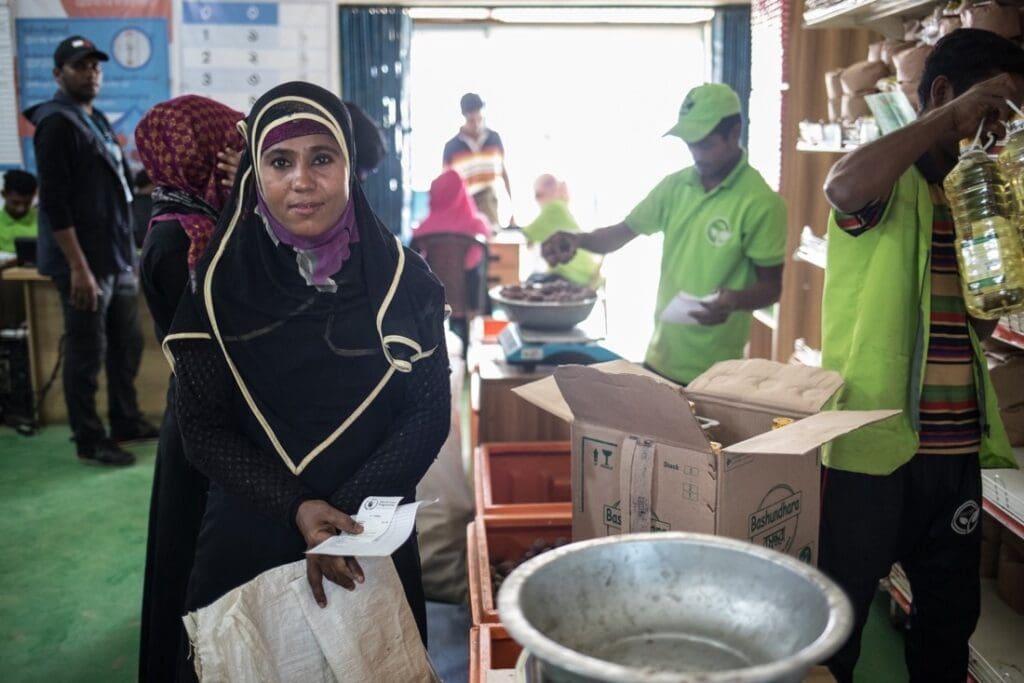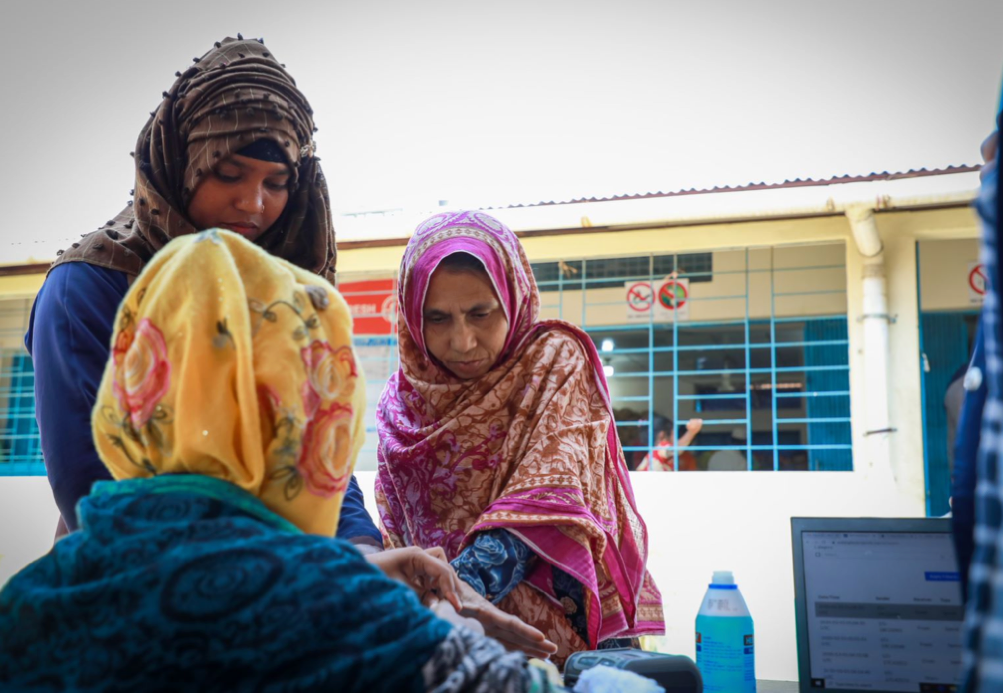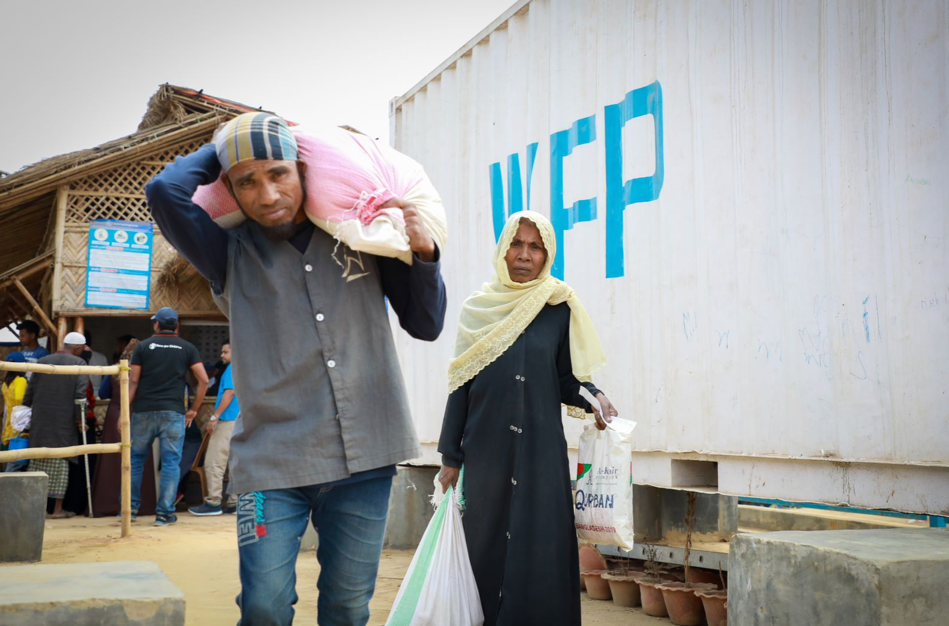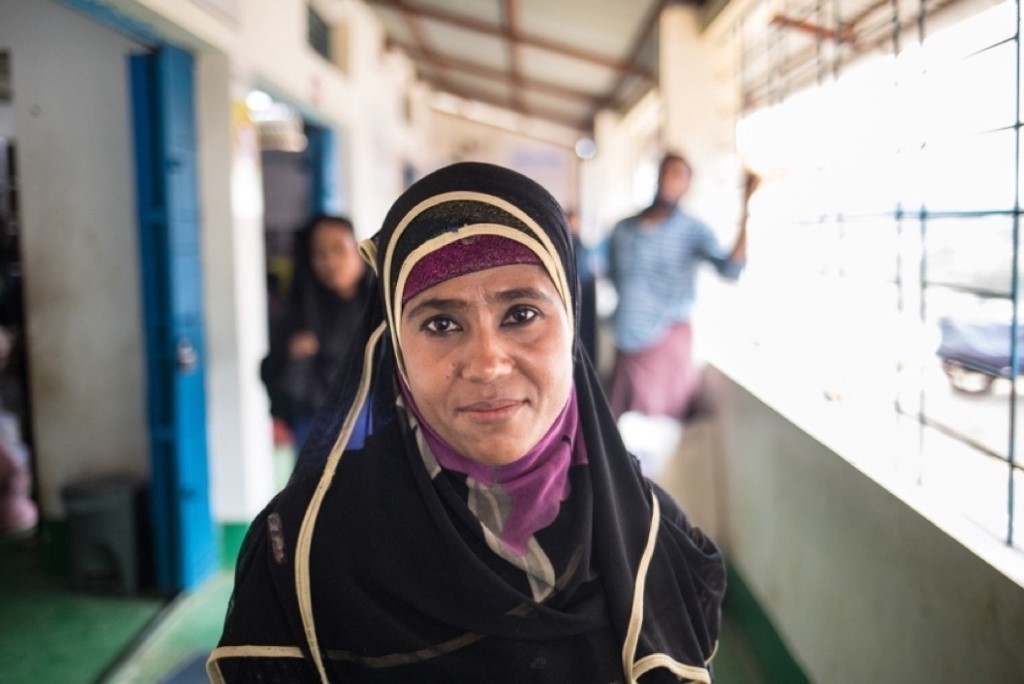How Blockchain Is Helping WFP Fight Against the Coronavirus in Bangladesh

For International Day of Families, the United Nations is focusing on the role digital technologies play in the well-being of families around the world. This past year, the COVID-19 pandemic has showed just how important technology is for families and communities to thrive. In Cox’s Bazar, a new digital system is empowering women and helping families maintain safe social distancing while the risk of COVID-19 remains.
While the new coronavirus has brought insecurity to much of the world, for people like Anwara, a resident in Kutupalong — the world’s largest refugee camp in Cox’s Bazar, Bangladesh — life has oddly become a little easier.
That’s thanks to blockchain, described as a ledger system which serves as “digital scaffolding for cryptocurrency transactions.” Last month, the technology was introduced to bolster the assistance that the United Nations World Food Programme (WFP) provides people while it faces COVID-19. As of September, blockchain is serving over 500,000 of the 855,000 Rohingya refugees in Cox’s Bazar, and the U.N. World Food Programme plans to extend its use to all of them before the years’ end.
How does WFP use blockchain?
With no means to earn an income, Anwara depends entirely on agencies such as the U.N. World Food Programme to survive.
Each month she and fellow recipients of food assistance are told when to collect their assistance from a variety of humanitarian organizations stationed within the sprawling camp, juggling a range of authentication forms for the various agencies.
Now Anwara and others like her have the potential to collect assistance from multiple humanitarian organizations, including the U.N. World Food Programme, in one go. The system is designed to be touch-operated but, because of the COVID-19 pandemic, a digital QR code is issued allowing people to collect assistance without having to handle potentially contagious devices.
The U.N. World Food Programme uses the technology — known as Building Blocks — as part of its continuous efforts to be a leader in digitally transforming the humanitarian sector, leveraging the most innovative technologies to reach those in greatest need as it seeks to save and change lives.

A QR code allows for people to be identified without the need to handle potentially contagious devices.
That assistance is stored in a digital account for Anwara to use at outlets within the camp. Once she decides what items she’d like to buy, the money is sent to the local retailers contracted to run those outlets, helping spur the sustainable development of her community while boosting the local economy.
A record of the transaction is updated in real-time on the blockchain, enabling organizations across the humanitarian sector to ensure individuals are receiving the right assistance, at the right time. This helps improve the coordination, optimization and transparency of humanitarian response between organizations.
All Anwara needs to do is present one card with her QR code, have it scanned, and then she can go about her day. These features are complemented by each organization’s management system, which determines how much is due to each individual.

Fixed baskets of food assistance reduce the need for people to visit shops.
Privacy is paramount for refugees
Anonymity is key for refugees who are fleeing from conflict zones: ensuring their privacy in the — albeit extremely unlikely — event that their personal information is used against them in some way is paramount.
“With blockchain, you can see who is assisting whom in a non-personally-identifiable manner,” says Houman Haddad, head of emerging technologies at the U.N. World Food Programme. In other words, individuals are issued an encrypted ID or code number to distinguish them from others, without revealing their true identities, for security and privacy reasons.
Haddad adds: “With this visibility, you can optimize and harmonize the collective efforts of multiple humanitarian organizations and stretch limited resources as far as possible.
“We can combine our resources to create a central network where the people we serve are put at the center of everything we do, and we can channel assistance to them directly in seconds.”
This is all part of a broader blockchain push that the U.N. World Food Programme is spearheading which began in Jordan in 2017. Thanks to the technology, 100,000 refugees across the country can now purchase groceries by having their irises scanned at checkouts.
Built on a private, permissioned blockchain, Building Blocks is integrated with UN High Commissioner for Refugees’ existing authentication technology. This not only saves on financial transaction fees in the camp setting but ensures greater security and privacy for refugees.
“It’s enabling us to make sure we can provide more meaningful assistance, while guaranteeing their anonymity,” says Pierre Guillaume Wielezynski, digital transformation services chief in the U.N. World Food Programme’s Technology division.

Anwara is the only member of her family living in the Kutupalong refugee camp. She depends entirely on WFP for food assistance.
More control, autonomy and flexibility for women
Building Blocks is built with the aim of equipping refugees to make choices that reflect their needs and interests, especially refugee women who are often forced by conflict into being the primary breadwinners and caregivers for their families. By providing them with greater choice, the U.N. World Food Programme can empower them to exercise greater control over their lives.
For the time being, however, while the risk of COVID-19 remains a threat, the U.N. World Food Programme is providing a fixed basket of pre-packaged food items to refugees to reduce the time people spend in shops where they could contract the virus.
“The technology also provides greater flexibility for people who collect assistance,” says Saiba Sahira, a U.N. World Food Programme program assistant in the e-voucher outlet where Building Blocks was launched.
The U.N. World Food Programme now has real-time control over the assistance provided and can troubleshoot issues in on the spot, reducing potential inconveniences to the people served. In the past, only two people from each family could shop — now anyone above the age of 14 can.
This is important in the grander vision of expanding the available outlets beyond just the U.N. World Food Programme retailers so that shopping duties can be divided among family members just like any other family, adds Saiba.
“Halima, one of the people we help, says that the process of shopping seemed easier to her and that a lot of times she had struggled coming to the shop since she has young children at home while her husband would go for work every day,” says Saiba.
“Now, it’s a relief for her to know that she can send her 17-year-old daughter and 15-year-old son to collect food if she isn’t available.”
This story was written by Vincent Matak and originally appeared on the U.N. World Food Programme’s Insight.
____________________________________________________________
Click here to learn more about Building Blocks and donate here to help us continue this work.




